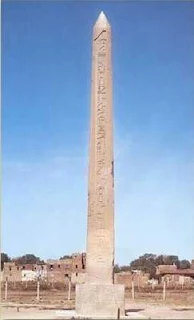Where you can explore culture and arts in Cairo · Tour of Khan al-Khalili and the museum in Memphis · Guided tour of the Giza Pyramids · Tour of the Egyptian Museum · Private tour...

Tourist places in Cairo
· Giza Pyramids · Egyptian Museum · Khan Al-Khalili · Saladin Citadel · Sultan Hassan Mosque · Al-Azhar Park.
Giza Pyramids.
It is an archaeological site on the Giza Plateau in Greater Cairo, Egypt. The complex includes the Great Pyramid, the Pyramid of Khafre, and the Pyramid of Menkaure along with associated pyramid complexes and the Great Sphinx. These pyramids were all built during the Fourth Dynasty of the Old Kingdom in ancient Egypt between 2600 and 2500 BC. The site also includes several cemeteries and the remains of a workers' village.
The complex is located on the edge of the Western Desert, about 9 kilometers (5.6 mi) west of the Nile River in Giza, and about 13 kilometers (8 mi) southwest of downtown Cairo. The site (along with the neighboring city of Memphis) was inscribed on the UNESCO World Heritage List in 1979.
Egyptian Museum
It is one of the largest and most famous international museums, located in the heart of the Egyptian capital, Cairo, on the northern side of Tahrir Square.
.The Egyptian Museum is considered one of the first museums in the world to be established as a public museum, unlike the museums that preceded it.
Seventy-three design projects competed for the construction of the museum building in Tahrir, and in the end the design of the French architect Marcel Dornon, who designed a creative work, was chosen to be the first museum in the world built to be a museum and not a building modified to be a museum.
Khan Al-Khalily
The place currently occupied by Khan Al-Khalili is located between Mashhad, Al-Hussein Mosque, and Al-Muizz Street, and between Al-Azhar Mosque Square and Street and the most prominent monuments of the Fatimid and Mamluk eras. Its location was the soil of the eastern palace of the Fatimid Caliph al-Muizz Billah, which contains the graves of the Fatimid caliphs, known as the “Saffron soil.”
In July 1511 AD, Sultan Al-Ghuri demolished Khan Al-Khalili and established in its place, enclosures, shops, quarters, and agencies for merchants reached through three gates. These enclosures and shops were demolished, and the khan was rebuilt after that.
Khan Al-Khalili was not affected by the factors of time, and remained an inspiration to writers and artists, always stimulating their imaginations to creativity, just as Naguib Mahfouz wrote his novel (Khan Al-Khalili) inspired by the atmosphere of the old neighborhood, describing it: “In the long street, you will find square-legged buildings with corridors connecting them.” Sideways at the intersection of the original street, the sides of the corridors and the street itself are crowded with shops (i.e. shops).
Matariya Obelisk
The Matariya Obelisk is the remaining and visible relic of the landmark of that city, in addition to some limestone panels for false doors to tombs, statues and engraved stones that we can see on the southern side of the obelisk, and they were displayed in the same place where these relics were found.
The obelisk is a square piece of one stone, graduated in height, ending with a small pyramid. In Arabic, it is called obelisk, meaning the large needle shaped like it.
This obelisk was erected by Senusret I, one of the kings of the Twelfth Dynasty (1940 BC), who ruled Egypt for 45 years, and on the occasion of the celebration of his royal jubilee. Kings celebrated it every thirty years, and there were kings who celebrated it less than that, and this holiday was considered a
religious event. Important political and social.


.jpg)


.jpg)
